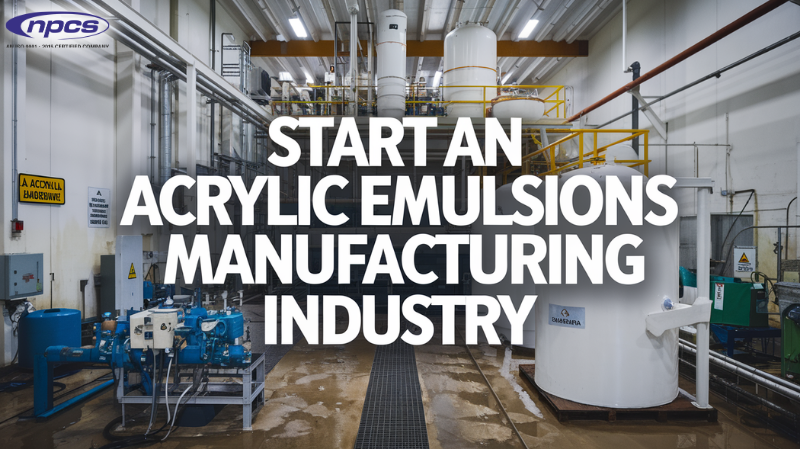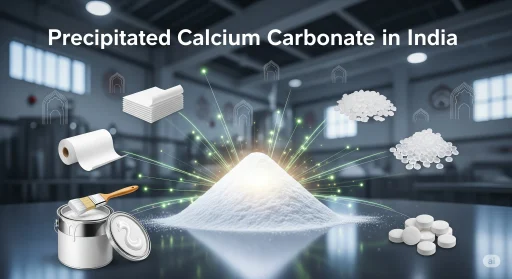Many different sectors employ aqueous dispersions called acrylic emulsions. Textiles, paints, varnishes, and adhesives widely use them. Their environmental sustainability makes them very profitable and marketable. The enormous market potential attracts many would-be business owners today. This article discusses how to launch a company that makes acrylic emulsions. Understanding the product and its ingredients is the first step. Analyzing target and rival markets is essential to success. It skillfully describes corporate growth methods and production stages.
.
What are Acrylic Emulsions?
Also Acrylic emulsions are one type of a polymer emulsion that are based on the emulsion of acrylic acid or its derivatives. These cloudy fluids occur as emulsions that water can easily disperse, making them applicable in various ways. They also tend to have properties of adhesion, flexibility, and some weathering resistance. For this reason, many coatings, paints, and glues use them.
Why Start an Acrylic Emulsions Manufacturing Business?
On the basis of a multitude of reasons it is justified to say that entering the structural acrylic emulsions market is any time rational:
- Scope of use: Structural acrylic emulsions have a vast range of applications including paint and coatings, adhesives, textiles, and paper converting, and many more.
- Rising Market: This is due to the fact that water based products such as acrylic emulsions which are less destructive to the environment. Than solvent based products are in great need with the concern of environmental sustainability.
- Industrial Importance: Acrylic emulsions are widely used in coating and other manufacturing processes. It create continuous market supply and prospects for investment.
- Flexibility: The technology can be designed for mini plants as well as for large scale production. They allow the growth responsiveness to be gradual.
Benefits of Starting an Acrylic Emulsions Business
- Expanding Market: Acrylic emulsion market is expected to witness rapid growth because of growing industrialization specifically in the coatings and adhesives applications.
- Eco-Friendly Products: Being a green friendly product, acrylic emulsions are gaining popularity in the sectors such as building materials. Where it is sourced for providing green solutions where that is the focus of the market.
- Customizable Production: Entrepreneurs can commence with mini production and scale up the production. As per the demand thereby providing easy expansion of the business.
- International Opportunities: There are possibilities for exporting and forming global alliances considering the chemical market is not limited to a specific country.
Top Applications of Acrylic Emulsions
Applications of acrylic emulsions in industry are several and include:
- Paints and Coatings: Acrylic emulsions form a significant portion of the water-based paints and thus provide good anchorage and strength.
-
Adhesives: Manufacturers use them as binders in various adhesives, including construction adhesives, packaging adhesives, and wood-working adhesives.
-
Textiles: The textile industry uses acrylic emulsions in fabric coatings and finishes to improve characteristics such as water proofing and durability.
-
Coated Paper: Paper manufacturers use these to coat papers with inks that enhance printing quality and paper surface finish.
Production Methods
The formulation of acrylic emulsions consists of the following industrial steps:
- Raw Material Procurement: Important raw materials’ supplies, in particular acrylic monomers and water, are done by verified providers.
- Emulsification Process: Water and emulsifiers are added to acrylic monomers in a vessel, and after a while stable emulsion is achieved. This step very often includes polymerization, in which active elements turn to long chains of polymers as a result of chemical interactions.
- Stabilization: Emulsion shelf life and stability were improved with the use of preservatives and stabilizers among the additives.
- Cooling and Storage: The emulsion is subjected to a cooling process and is stored in suitable containers for stability and readiness for distribution.
- Quality Control: There is an extensive testing and quality control process in place to make sure that the end product is in accordance with the relevant standards.
Detailed Exploration of Profitable Chemical Industry Business Ideas
Essential Machinery for Acrylic Emulsions Manufacturing
Manufacturing acrylic emulsions requires the use of specialized equipment so that safety and productivity are maintained. Some of the major apparatus include:
- Reactors: These are the vessels used for the emulsifier and polymerization processes and has the capability of withstanding pressures and temperatures.
- Mixers: High shear mixers are mandatory for the formation of a consistent emulsion with the raw constituents.
- Cooling Systems: Limiting temperature’s elevation during course of manufacturing via these systems helps in producing a consistent and quality end product.
- Storage Tanks: Are very specific in design in order to hold raw or processed materials containing finished goods in a safe and legally accepted manner.
- Filtration Systems: For empbedding quality output, these systems are employed in filtration process of emulsions.
- Safety Equipment: Installation of fire suppression systems, emergency showers, and personal protective clothing (PPE) is equally important in enhancing the safety of the production establishment
Starting Your Acrylic Emulsions Manufacturing Business
In order to launch your own business in the field of manufacturing acrylic emulsions, do the following:
-
Conducting Market Research
One must know what the landscape looks like. Consider where the demand will come from, i.e. paint makers, textile makers, and those involved in construction. Study the opportunities available by finding out about the trends in the market, the needs of the consumers, and the existing competition.
-
Creating a Business Plan
Prepare an elaborate business plan with section specializing on the goals of production, marketing, finances and operations. A well put plan is very useful as it acts as a map and a very key tool in the different strategies striven to formulate for the investment quest in the right direction of the business.
-
Prove that the Business is Compliant
Production of acrylic emulsions is associated with numerous restrictions geared towards the safety of people and the surrounding ecosystem. Where applicable, seek the right licenses and permits from the appropriate bodies, and obey the national and global regulations.
-
Put Up the Necessary Units for Production
Settle for the required machine and construct a workshop that enhances the safety and quality of the company’s services. There should be adequate systems for ventilation, fire safety, and provision of safety gears to prevent any hazards.
-
Securing of Raw Materials
Find a dependable network for the sourcing of primary input materials such as acrylic monomers with additives. It is important to appoint suppliers on extended engagement contracts to maintain the supply without interruptions.
-
Prioritize Quality Management
High quality standards of the end product should never be compromised. Draw out quality assurance measures from the initial stage of receipt of raw materials to the finished product so as to safeguard wellbeing and efficiency of the end product.
-
Marketing & Sales Strategy
Implement a marketing program focused on the ever-important client base in the industries looking for such products. Tradeshows, networking and online marketing are great ways of getting your products out there.
-
Research and Development
The field of chemicals is changing every day through novel advancements. Research and development funding is a way of improving ways of manufacturing, minimizing costs and creating new products for the market.
Conclusion
The need for acrylic emulsions has accelerated the industry’s growth. For investors looking for opportunities, starting this firm is appealing. Recognize clients, abide by regulations, and continuously deliver high-quality items. There is a lot of opportunity for financial success in this expanding sector. Maintaining a research mindset facilitates efficient monitoring of market developments. Success in this sector is more likely when one adjusts to trends. When the proper strategies are used, company prospects are effectively maximized. Manufacturing acrylic emulsions has the potential to be a profitable business endeavor.





